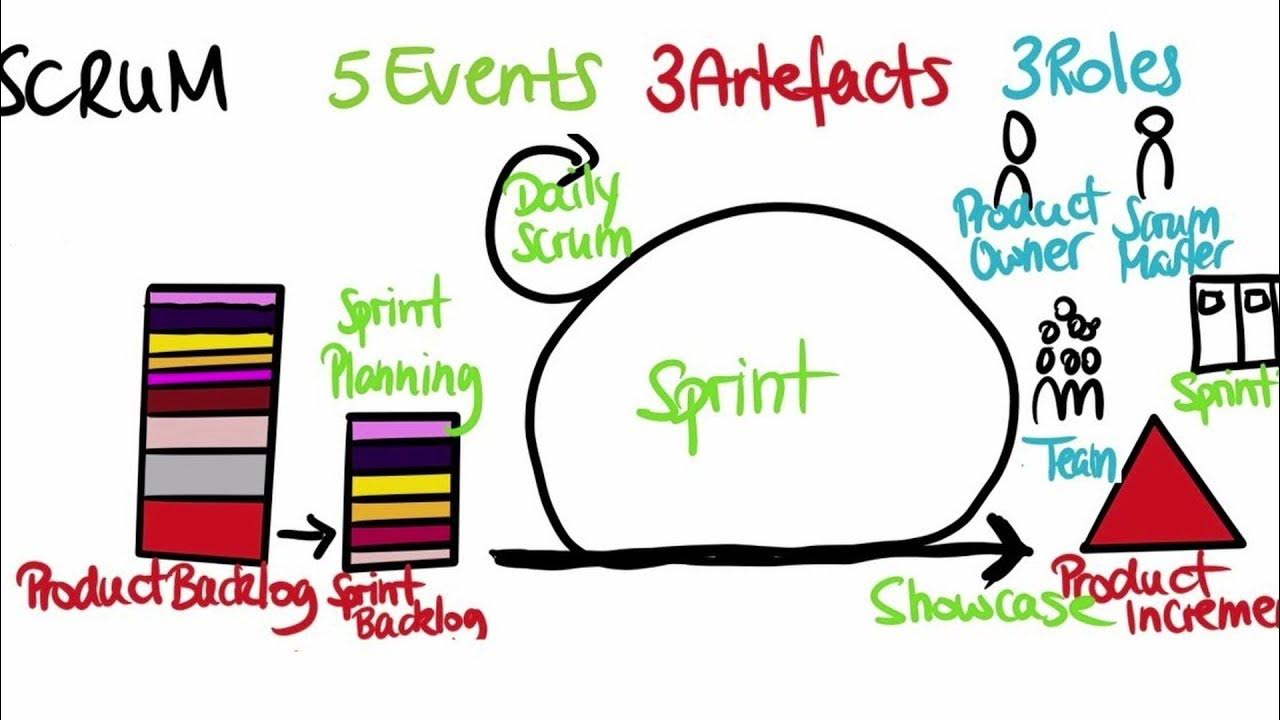Inside The Scrum Team - 15-Minute Introduction to Scrum - Free Scrum Course
Summary
TLDRThis video, part of 'Inside the Scrum Team,' explores how Scrum teams interact with stakeholders to deliver valuable products. It emphasizes the importance of a structured approach to product development through sprints, focusing on tangible results, stakeholder engagement, and continuous improvement. The roles of the Product Owner, Developers, and Scrum Master are clearly defined, highlighting their responsibilities in maximizing product value, ensuring effective collaboration, and facilitating team dynamics. The Scrum framework fosters transparency and self-organization, ultimately enabling teams to achieve their goals efficiently and effectively.
Takeaways
- 😀 Scrum is a simple, team-based framework designed for solving complex problems, originally created for software development but applicable in various domains.
- 📦 A product in Scrum can be both tangible, like a physical item, and intangible, like a process improvement or new location.
- 🔄 Scrum operates in short iterations known as sprints, producing a product increment that stakeholders can review regularly.
- 🤝 Stakeholder engagement is crucial; regular interaction helps eliminate delivery risks and builds trust in the product's development.
- ✅ Each Scrum Team maintains a 'Definition of Done' to ensure quality, confirming that every product increment is complete and functional.
- 👥 The Scrum Team comprises three key roles: Developers, Product Owner, and Scrum Master, with no hierarchies among them.
- 🎯 The Product Owner is responsible for maximizing product value and making critical decisions about the product backlog.
- 🛠️ Developers are self-organizing and collaborate to create the product increment, possessing all necessary skills to deliver results.
- 📅 Sprint planning includes defining the Sprint Goal, determining what will be delivered, and outlining how the team will achieve it.
- 🔍 The Scrum Master facilitates team effectiveness and continuous improvement, addressing impediments and promoting collaboration.
Q & A
What is the main purpose of Scrum?
-Scrum is a framework designed to help teams solve complex problems through iterative processes, focusing on delivering valuable products efficiently.
How often does a Scrum Team produce a product increment?
-A Scrum Team produces a product increment at least once per sprint, which is a short iteration typically lasting 1 to 4 weeks.
What is the Definition of Done in Scrum?
-The Definition of Done is a quality gate that ensures that no work enters the product increment unless it meets predefined criteria for quality and completeness.
Who is responsible for maximizing the value of the product?
-The Product Owner is responsible for maximizing the product's value by prioritizing tasks and managing the product backlog.
What role does the Scrum Master play in a Scrum Team?
-The Scrum Master facilitates the Scrum process, helps the team improve their practices, and ensures effective collaboration and communication within the team.
How does the Scrum Team ensure stakeholder engagement?
-The Scrum Team engages stakeholders through regular interactions, Sprint Reviews, and by involving them in backlog refinement to gather feedback and validate ideas.
What is backlog refinement, and why is it important?
-Backlog refinement is the process of clarifying and breaking down the most important backlog items into smaller, manageable tasks, ensuring that they are transparent and ready for the next sprint.
Why is self-organization important in Scrum?
-Self-organization empowers team members to make decisions about their work, fosters accountability, and enhances collaboration, leading to better problem-solving and product outcomes.
What challenges might a Scrum Team face with stakeholder involvement?
-Challenges include stakeholders having different priorities, slow decision-making processes, and potential misalignment of goals, which can complicate product development.
How can a Scrum Master address impediments within the team?
-The Scrum Master helps identify and address impediments by facilitating discussions during the Daily Scrum and Sprint Retrospectives and working with the team to find solutions.
Outlines

This section is available to paid users only. Please upgrade to access this part.
Upgrade NowMindmap

This section is available to paid users only. Please upgrade to access this part.
Upgrade NowKeywords

This section is available to paid users only. Please upgrade to access this part.
Upgrade NowHighlights

This section is available to paid users only. Please upgrade to access this part.
Upgrade NowTranscripts

This section is available to paid users only. Please upgrade to access this part.
Upgrade NowBrowse More Related Video

The Scrum Guide (In under 15 minutes!)

LEARN How to SCALE with Nexus in 9 mins (SIMPLE STEP BY STEP GUIDE)

Understanding Scrum Metrics : Velocity, Burn down chart, Burn Up Chart

What do Scrum Masters do all day? I How to be a Great Scrum Master

What Is Scrum? (An Agile Cartoon)

🔴 Running a Scrum Sprint STEP-BY-STEP | Practical Guide to Sprints in Scrum
5.0 / 5 (0 votes)